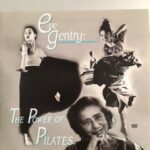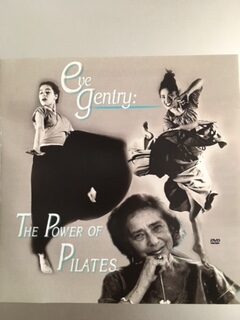Issue #353 – Wednesday, December 1, 2021
Pilates: The Past in the Present (and Future)
The Making of a Documentary Series on 1st and 2nd Generation Teachers
by Marion Kessel
The idea of doing a film on the Legacy of Pilates and those who inherited ideas and practices from Joseph Pilates himself came to me at least 20 years ago when the Pilates Method Alliance (PMA) was in its infancy, and when the particular form of exercise/movement was first becoming widely known and part of the mainstream.
As a long-time Pilates practitioner and then a teacher, I was becoming increasingly aware that, although “Pilates” was gaining in popularity, there was widespread ignorance regarding its origins, history, purpose, principles, and even the source of the name. Also, at that time, there was still a core group of exceptional teachers, some still highly and admirably active, who had actually worked with and learned from Joseph Pilates himself. Nevertheless, those of us who had been practicing Pilates for years, even decades, recognized that newer practitioners had little knowledge of the history and source of the core principles of “Pilates”. Even today, with all that the PMA has done to educate and formalize the credentials of those teaching[1], even now with a literally world-wide movement in place, there are those taking and teaching classes who know little to nothing about this distinctive form of facilitating physical and mental well-being.
Given that background, and especially as an experienced documentary film director-producer (with a primary focus on the arts), my thoughts almost inevitably turned to the possibility of education through documentary film. And so, with a single full-length film in mind, I started travelling and talking to 1st generation teachers – “Elders” who had worked with Joe and Clara Pilates – trying to convince them to participate in a project aimed at capturing and conveying the legacy. The overall goal of such a film would be to describe and explain to current and future generations the deep roots of their practice.
After several years dedicated to trying to bring that vision into being, it became clear that, for a range of reasons, not all of the Elders would agree to be part of the same film. Nevertheless, the time I spent with them, in conversation and being instructed, proved to be an enlightening education. I was privileged to spend hours with some admirable teachers, among them Kathy Grant and Ron Fletcher, and to hear their stories first-hand. And in certain instances, I spent time learning with second-generation teachers such as Deborah Lessen (who passes on the legacy of Karola Trier) and, in what became an especially significant development, with Michele Larsson (who carries forward Eve Gentry’s ideas and inspiration).
As the feasibility of one comprehensive film receded, I became convinced that the only way to begin at all was to separate and tell the stories of different branches of the ‘family tree’, all deeply grounded in one root, Joseph (and Clara) Pilates, yet emerging and evolving in distinctive individual ways.
And here a coincidence-of-a-kind came into play. Although Michele Larsson and I had decided to move forward with a first film focused on Eve Gentry, my move to Albuquerque (from Houston and New York) made collaborating with Michele (just an hour away in Santa Fe) significantly simpler. (Another positive coincidence – Suzanne Gutterson, who had studied with Eve and is thus also a 2nd-generation-member, lived only a few houses away on the same street!) The goal was to convey in captivating ways the story of how, with Joe’s blessing, Eve was the first to take the method/approach beyond its base in New York and how, in the process, she expanded the principles and practice into “Gentry technique”.
It was, in fact, “Gentry technique” that served as my most personally significant connection to Pilates. Because some years earlier, after I had developed a debilitating auto-immune condition that affected my muscles and joints, and after medical treatment had helped alleviate the basic symptoms, I had to work my way back to simple, essential movements. And in that challenging months-long process, I not only began to develop what I now refer to as “Marion’s Method Pilates: Separation and Integration”, but more important in this context, I also discovered that the core principles of such an approach had already been perfected by Eve, embodied in what is now known by some of us as “Pre-Pilates” (i.e., subtle, connecting movements that help lay a firm basis for work on mat and machines). Moreover, I like to think that this personal perspective helped deepen the way the film was conceived and constructed.[2]
How then did developing the documentary unfold? As I gathered archival material, conducted interviews, and shot illustrative studio work, the primary problem that emerged was finding usable footage of Eve herself, demonstrating and talking about her approach. During her time (1960s-80s), no one had thought to make professional audio or video recordings of her work. So, apart from one old, yet powerfully significant, film shot in New York by Eve’s husband, Bruce, and a few non-professional sound recordings, we had to create the narrative thread through the work and words of the people she had mentored.
Because I nevertheless wanted Eve’s presence felt/experienced, and because it dramatically documented how Joe had helped her recover fully from a radical mastectomy, Bruce’s film became vital in telling her story. And I was able to give it pride of place in the documentary by sending it to several film laboratories to be restored as it had been stored in a very dry climate without thought to its possible importance. The sound recordings of some of her lecture-demonstrations also went through several restorations and are included in a way that’s meaningful.
Given its premiere screening at the annual PMA Conference and subsequently shown in a variety of places around the world, Eve Gentry: The Power of Pilates© conveys Eve’s compelling life journey, significantly guided by Joe and Clara Pilates, “from dancer, to teacher, to Pilates teacher, to healer”. And I feel privileged as a filmmaker to have had the opportunity to bring that story to the wider Pilates community.
Hoping to have Ron Fletcher and Kathy Grant as part of the Legacy Series, I spent many hours in their company (both in New York and in Boulder). Unfortunately, although I was able to record extensive audio interviews with Ron, for several reasons (at that point both he and Kathy were reluctant to go on camera) neither of those projects materialized. I was, however, able to collaborate for several years with Mary Bowen, one of the youngest of the still-active Pilates Elders. As a result, Pilates Plus Psyche© – documenting Mary’s early experiences with Joe and Clara and exploring her contribution to the tradition – was given its premiere at the PMA Conference.
Although my initial idea of a Pilates Legacy series wasn’t fulfilled, I’m gratified that the Eve Gentry documentary continues to reach practitioners of various kinds in many parts of the world, best illustrated by a version that has been translated into Japanese. May Joe’s (and Clara’s) vision and firmly grounded principles continue to be more deeply understood and genuinely valued.
Note: DVD’s of Eve Gentry: The Power of Pilates© can be purchased directly from Marion Kessel – marionartsalive@gmail.com
[1] The accreditation process is now the responsibility of The National Pilates Certification Program (NPCP).
[2] Regrettably, Eve passed away about a decade earlier and I never had the opportunity to meet her.
Marion Kessel PMA® – NCPT has been a Pilates practitioner for 30+ years. In her ‘other life’, drawing on early, firm foundations in music, stage-craft, theatre and dance, she has created documentaries on the performing arts and directed multiple cameras for live screenings of opera performances. After living in several cities on several continents (e.g. Minneapolis, Edmonton, The Hague, Houston and New York), Marion and her husband now find themselves in Albuquerque, New Mexico.



